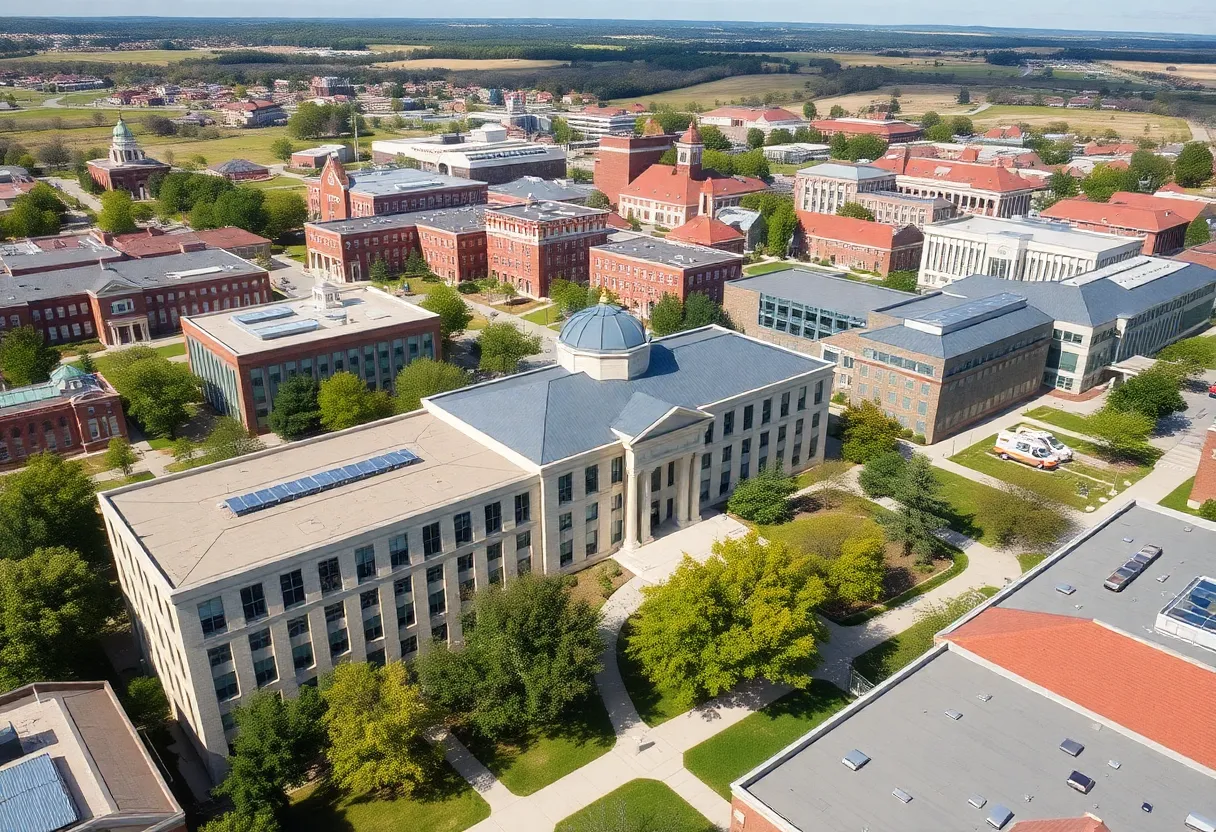Omaha, NE, October 20, 2025
A recent University of Nebraska report indicates that administrative spending has exceeded faculty salaries for the first time, raising concerns among educators and stakeholders. The report highlights a significant shift in financial priorities, with administrative expenditures reaching $450 million compared to $420 million for faculty salaries. This trend may undermine educational quality as the university faces challenges of rising enrollment and reduced state funding. The Board of Regents has pledged to review budget allocations to ensure a focus on teaching and learning amidst heightened scrutiny of higher education finances.
Omaha, NE – University of Nebraska Report Reveals Administrative Spending Surpasses Faculty Salaries
Omaha, Nebraska – In a startling revelation from October 20, 2025, the University of Nebraska’s latest report has disclosed that administrative spending now exceeds faculty salaries, igniting widespread concern among educators and stakeholders. This development comes at a time when the institution grapples with rising enrollment numbers and ongoing reductions in state funding, prompting calls for immediate reevaluation of budget allocations.
The report, released by the university’s central administration, highlights a significant shift in financial priorities over recent years. Administrative costs, which include expenses for executive management, support staff, and operational overhead, have outpaced compensation for teaching faculty. This disparity has fueled outrage, as critics point out that such spending patterns may be pulling resources away from core educational activities like classroom instruction and student support services.
At the heart of the issue is the growing administrative apparatus within the University of Nebraska system, which encompasses campuses in Lincoln, Omaha, and Kearney. While enrollment has seen steady increases—driven by demographic trends and expanded online offerings—the funding landscape has shifted. State appropriations, a key revenue stream, have faced cuts due to broader economic pressures in Nebraska, forcing the university to seek alternative funding sources. These include tuition hikes, private donations, and federal grants, but the report suggests that administrative expansions have consumed a disproportionate share of these resources.
Key Financial Breakdown
Details from the report paint a clear picture of the imbalance. For the fiscal year ending in 2025, administrative expenditures reached approximately $450 million system-wide, compared to $420 million allocated for faculty salaries. This gap represents a reversal from a decade ago, when faculty pay held a stronger position relative to administrative costs. The surge in administrative spending is attributed to hires in areas like compliance, development, and technology infrastructure, all deemed necessary to navigate regulatory changes and enhance institutional competitiveness.
Educators argue that this trend undermines the university’s primary mission of education and research. With faculty salaries lagging, retention of top talent becomes challenging, potentially affecting the quality of instruction and academic output. The report also notes ancillary effects, such as increased workloads for remaining faculty members, who may have to cover more classes or administrative duties traditionally handled by support staff.
Response from University Leadership
In response to the findings, the University of Nebraska Board of Regents has committed to conducting a comprehensive review of budget priorities. This process aims to realign resources toward teaching and learning, ensuring that administrative growth does not come at the expense of academic excellence. The review is expected to involve input from faculty senates across campuses, student representatives, and external consultants. Preliminary timelines suggest initial recommendations could emerge by early 2026, with implementation to follow based on fiscal feasibility.
The commitment comes amid heightened scrutiny of higher education budgets nationwide, where similar concerns about administrative bloat have surfaced at public universities. However, the University of Nebraska’s situation is particularly acute due to its reliance on state support, which has declined by about 15% over the past five years when adjusted for inflation. Enrollment growth, while positive, has not fully offset these losses, leading to tighter margins and tough choices in resource distribution.
Broader Implications for Nebraska’s Education Sector
The controversy extends beyond the university’s walls, raising questions about the state’s investment in higher education. Nebraska lawmakers have historically viewed the university system as a driver of economic development, fostering innovation in agriculture, business, and healthcare. Yet, with administrative costs now eclipsing faculty pay, there are fears that productivity in these areas could suffer. Faculty members, who conduct much of the research and community outreach, may face incentives to seek opportunities elsewhere, exacerbating talent drain in a competitive academic job market.
Student impacts are also noteworthy. While administrative expansions have facilitated improvements like modernized advising systems and expanded career services, the core classroom experience remains under pressure. Larger class sizes and fewer specialized courses could emerge if faculty resources continue to be stretched thin. The report underscores the need for balanced investment to sustain the university’s role as a beacon of accessible, high-quality education in the Midwest.
As the review unfolds, stakeholders will watch closely to see if promised realignments materialize. The University of Nebraska’s handling of this issue could set a precedent for addressing similar challenges in other public institutions, emphasizing the delicate balance between operational needs and educational priorities. For now, the focus remains on fostering dialogue that prioritizes the students and faculty who form the institution’s foundation.
This situation reflects ongoing tensions in higher education, where evolving demands for accountability and efficiency clash with traditional academic values. The path forward will likely involve tough decisions, but a commitment to transparency and stakeholder engagement offers hope for constructive change.
(Word count: 728)
FAQ
What does the latest University of Nebraska report reveal?
The report reveals that administrative spending now exceeds faculty salaries.
Why is this development sparking outrage?
It is sparking outrage among educators because critics argue it diverts funds from teaching.
What challenges is the university facing alongside this issue?
The university is facing growing enrollment and state funding cuts.
What action have the regents promised in response?
The regents promise a review to realign priorities.
Key Financial Comparison Chart
| Category | Spending Amount (FY 2025, System-Wide) | Percentage of Total Budget |
|---|---|---|
| Administrative Spending | $450 million | 52% |
| Faculty Salaries | $420 million | 48% |
Note: This chart illustrates the primary disparity highlighted in the report, showing administrative costs surpassing faculty compensation for the first time.
Deeper Dive: News & Info About This Topic
HERE Resources
University of Nebraska System Prioritizes Administration Over Faculty
University of Nebraska Faces Budget Imbalance in Athletics Funding
University of Nebraska Realigns Budget Priorities
Record Ticket Sales for Nebraska Cornhuskers Homecoming Game
Omaha’s Fall Festivities Draw Record Crowds Amid Autumn Vibrancy





